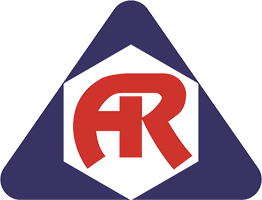The "explicit cost" trap of CNC machining quotation
When purchasing personnel receive a CNC machining quotation, they usually only pay attention to the three explicit costs of material cost, processing time cost, and surface treatment cost. However, the real cost difference is often hidden in the following three links that are easily overlooked:
1. Material utilization rate trap
Case: Taking the purchase of automotive aluminum brackets as an example, the difference in quotations between two suppliers seems to be due to the cost of sheet metal. After the purchaser finally chose the supplier with a lower quotation, it was found that the other party saved materials by compressing the spacing of parts, resulting in burrs during processing, and the subsequent manual polishing process required, which pushed up the overall cost.
Guide to avoiding pits: Ask suppliers to provide material layout drawings to confirm whether the spacing meets industry standards.
2. Hidden costs of process path design
Case: In the stainless steel precision parts order of medical device buyers, one supplier adopted a staged processing process, while the other adopted a simplified process. Although the latter had a lower initial quotation, the tool wear was accelerated due to unreasonable process design, and the cost was eventually passed on by increasing the tool procurement fee.
Industry Insight: In precision CNC machining, reasonable process path design directly affects machining efficiency and resource consumption.
3. The "disappearance and reappearance" of testing costs
Case: In the case of electronic connector procurement, after the supplier whose quotation did not include the testing fee delivered the goods, the purchaser was forced to increase the full inspection cost due to substandard quality. This exposes the industry's unspoken rule that some suppliers lower their quotations by omitting necessary testing links.

Identification and response strategies for the four major hidden costs
Hidden cost 1: Hidden risk of fixture amortization
When a part requires a special fixture, the supplier may allocate the fixture cost to the unit price. This model will cause the cost ratio to increase abnormally when the order volume fluctuates, and the purchaser often does not notice the problem until the settlement stage.
Countermeasures: Small batch orders should require separate fixture costs to avoid cost ambiguity.
Hidden cost 2: "Black box operation" of tool life
Take titanium alloy parts processing as an example, the durability of tools of different qualities varies significantly. In a case of purchasing aviation parts, although the supplier using high-end tools had a higher initial quotation, the actual total cost was more advantageous due to the reduction of tool change downtime losses.
Judgment skills: require suppliers to provide tool brands and process parameters, and focus on checking the tool configuration of key processes.
Hidden cost 3: "Tuition transfer" of process trial and error
In the case of purchasing new energy battery box bodies, the supplier who promised "zero trial production fee" directly mass-produced without sufficient verification, resulting in the scrapping of the first batch of parts. This risk was eventually passed on to the purchaser by increasing the unit price of subsequent orders.
Avoid pit clauses: clarify the responsibility for trial production in the contract and require suppliers to provide process verification reports.
Hidden cost 4: "cost black hole" of logistics packaging
In the transportation of precision optical parts, after the supplier using cheap packaging delivered the parts, the parts had excessive precision due to transportation vibration. This reminds the purchaser: packaging cost savings may lead to greater quality losses.
Industry warning: The transportation of precision parts must meet professional protection standards, and logistics cost compression should not be blindly pursued.

Build a three-dimensional anti-scam system
1. Technical review stage
Require suppliers to provide complete process documents, focusing on the setting of quality control nodes
Investigate the production site, observe the equipment maintenance status and calibration records of testing instruments
2. Design of contract terms
Establish a price linkage mechanism to cope with fluctuations in the raw material market
Clearly define the liability for quality breach and set quantifiable compensation standards
3. Supplier capability assessment
Establish an assessment model covering multiple dimensions such as technical strength, quality control, and delivery assurance. For example:
Review the supplier's process optimization case library
Verify the coverage and accuracy level of the testing equipment
Evaluate the emergency response mechanism under abnormal circumstances
Cognitive upgrade from "price comparison" to "value comparison"
In the field of CNC machining, real cost control needs to penetrate the quotation appearance and identify the supplier's true technical capabilities. It is recommended that the procurement team establish a systematic "Cost Analysis List" and conduct in-depth assessment from the three dimensions of material utilization, process robustness, and quality assurance. When encountering a supplier who claims to use an intelligent quotation system, it is advisable to ask about the technical details of its algorithm model, such as whether it considers the impact of material characteristics on processing parameters, and whether it can dynamically optimize tool compensation strategies. Only by upgrading cost management from "price game" to "value co-creation" can we achieve sustainable cost reduction and efficiency improvement.







